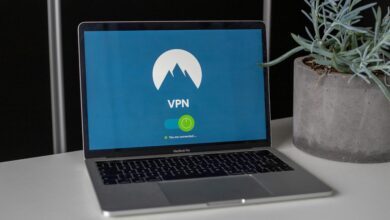How to Use a VPN to Bypass Censorship

In many parts of the world, governments and organizations impose restrictions on internet access, blocking websites, social media platforms, and other online services. This form of internet censorship limits freedom of expression, access to information, and communication. A Virtual Private Network (VPN) is one of the most effective tools for bypassing such restrictions, allowing users to access blocked content securely and privately.
In this article, we’ll explain how a VPN works, why it’s useful for bypassing censorship, and provide a step-by-step guide on how to use a VPN effectively.
What Is a VPN?
A Virtual Private Network (VPN) is a service that encrypts your internet connection and routes it through a remote server located in another region or country. By doing so, it masks your IP address, making it appear as though you’re browsing from a different location. This allows you to bypass geo-restrictions, avoid surveillance, and access censored content.
Key Features of a VPN:
- Encryption : Protects your data from hackers, ISPs, and government monitoring.
- IP Masking : Hides your real IP address, replacing it with one from the VPN server.
- Access to Blocked Content : Enables access to websites and services restricted in your region.
- Privacy : Prevents tracking by advertisers and third parties.
Why Use a VPN to Bypass Censorship?
Censorship can take many forms, including:
- Blocking social media platforms like Facebook, Twitter, or YouTube.
- Restricting access to news websites or independent media.
- Limiting communication apps like WhatsApp, Telegram, or Signal.
- Monitoring online activity to suppress dissent.
A VPN helps bypass these restrictions by:
- Hiding Your Online Activity : Encryption prevents authorities or ISPs from seeing what you’re accessing.
- Changing Your Virtual Location : Connecting to a server in a different country allows you to bypass regional blocks.
- Securing Your Connection : Protects you from surveillance and cyber threats when using public Wi-Fi.
Step-by-Step Guide to Using a VPN to Bypass Censorship
1. Choose a Reliable VPN Provider
- Look for a VPN with a proven track record of bypassing censorship.
- Key features to consider:
- Strong Encryption : AES-256 encryption is the industry standard.
- No-Logs Policy : Ensures your activity isn’t stored or shared.
- Servers in Multiple Countries : Allows you to access content from various regions.
- Obfuscation Technology : Helps bypass advanced censorship tools like firewalls.
- Fast Speeds : Ensures smooth streaming and browsing.
- Recommended providers: ExpressVPN, NordVPN, Surfshark, and ProtonVPN are popular choices.
2. Download and Install the VPN App
- Visit the official website of your chosen VPN provider.
- Download the app compatible with your device (Windows, macOS, iOS, Android, etc.).
- Install the app and log in using your account credentials.
3. Connect to a Server
- Open the VPN app and select a server located in a country where the content you want to access is not restricted.
- For example:
- To access U.S.-based websites, connect to a server in the United States.
- To bypass national firewalls, choose a server in a nearby country with less restrictive policies.
- Some VPNs offer specialized servers designed to bypass censorship (e.g., obfuscated servers).
4. Verify Your Connection
- Once connected, check your new IP address using websites like WhatIsMyIPAddress.com .
- Ensure your traffic is encrypted by visiting DNSLeakTest.com to confirm there are no leaks.
5. Access Blocked Content
- Open your browser or app and visit the website or service you want to access.
- The VPN will route your traffic through the selected server, bypassing censorship and granting access.
Tips for Using a VPN Effectively
- Use Obfuscated Servers : In highly censored countries (e.g., China, Iran), use VPNs with obfuscation technology to hide the fact that you’re using a VPN.
- Enable Kill Switch : This feature automatically disconnects your internet if the VPN connection drops, preventing accidental exposure of your activity.
- Switch Protocols : If one protocol doesn’t work, try others (e.g., OpenVPN, WireGuard, IKEv2) for better performance and compatibility.
- Stay Updated : Keep your VPN app updated to ensure you have the latest security patches and features.
- Test Different Servers : If one server doesn’t work, try connecting to another in the same or a different country.
Challenges and Considerations
While a VPN is a powerful tool for bypassing censorship, there are some challenges to be aware of:
1. Advanced Censorship Tools
- Some governments use sophisticated systems like the Great Firewall of China to detect and block VPN traffic.
- To counteract this, use premium VPNs with advanced obfuscation features.
2. Legal Risks
- In certain countries, using a VPN may be illegal or frowned upon. Research local laws before proceeding.
3. Performance Issues
- Free or low-quality VPNs often have slow speeds, limited server options, and weak security. Invest in a reputable paid service for better results.
4. Blocked VPN Apps
- In some regions, VPN apps may be removed from app stores. In such cases, download the app directly from the provider’s website.
Alternatives to VPNs for Bypassing Censorship
If a VPN isn’t sufficient or available, consider these alternatives:
- Tor Browser : Routes your traffic through multiple nodes, providing anonymity but at slower speeds.
- Proxy Servers : Offers basic access to blocked sites but lacks encryption and privacy.
- Smart DNS : Unblocks geo-restricted content without encryption, suitable for streaming but not secure browsing.
- Shadowsocks : An open-source proxy tool designed to bypass censorship, commonly used in China.
- Encrypted Messaging Apps : Use apps like Signal or Telegram to communicate securely in censored environments.

